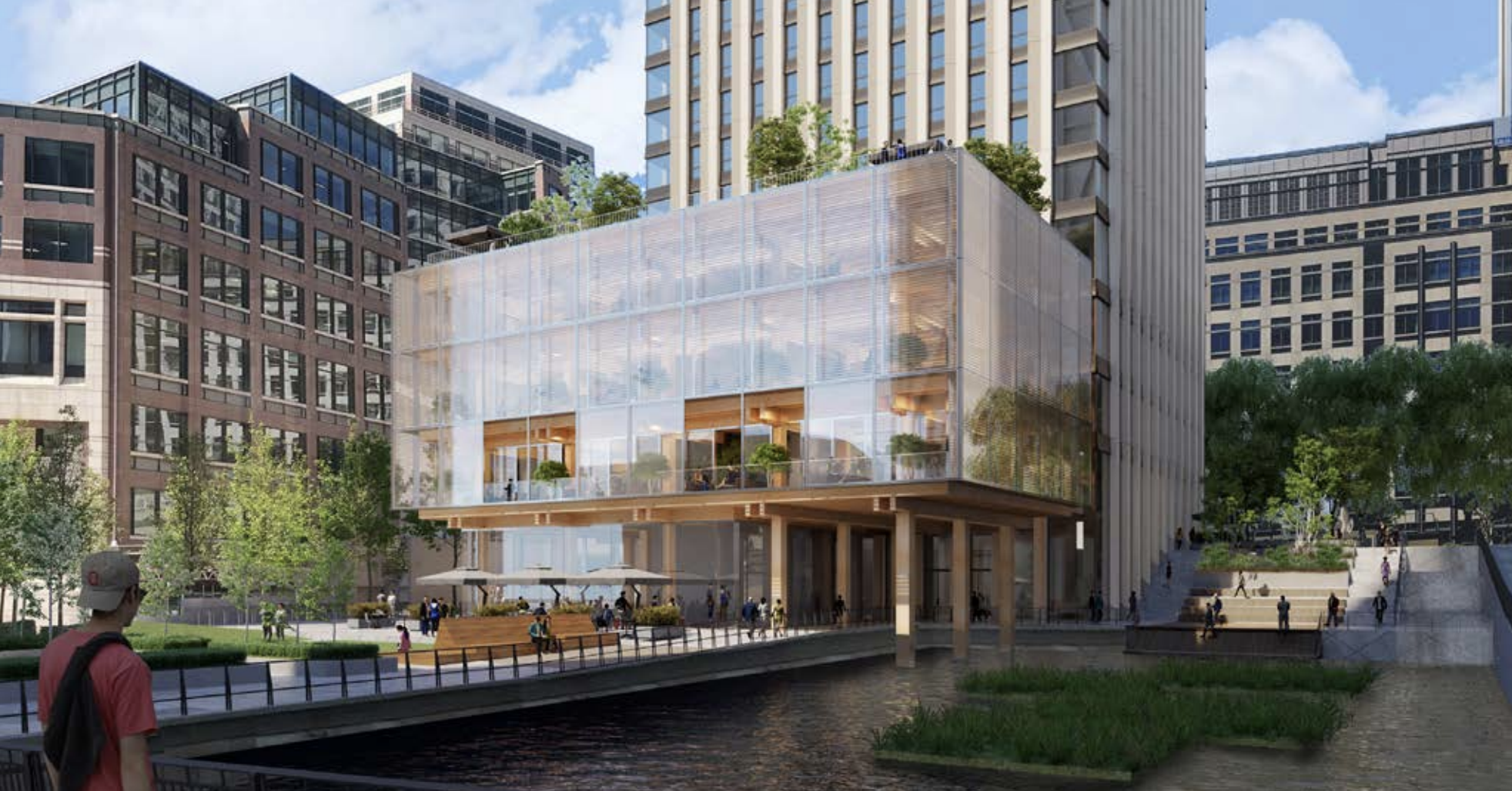“The AO team believes in the mantra ‘better together.’ It’s more than just architecture for us.”
The construction industry is known for its capacity to build, and its very foundation is built on relationships. Industry leaders continuously maximize the value of long-lasting relationships, particularly in partnerships, to improve business outcomes, secure more projects, and foster greater collaboration.
Jeff Thomas III, Design/Workflow Technology Lead with leading architecture and design firm AO, understands how vital relationships are to advancing innovation and productivity in construction. We recently spoke to Jeff about his career in design and workflow technology, the evolution of the industry, how to handle relational challenges, and more. We encourage you to learn from his approach by reading his story below.
Tell us a little bit about AO and what you specialize in.
AO is a full service architectural, master planning and design firm specializing in retail, residential and mixed-use projects. We’re based in Orange, California, with additional locations in Atlanta, Solana Beach, and Sunnyvale. We have expertise in interiors, multi-family, retail, hospitality, restaurant, mixed-use, office, and industrial parking.
In addition to architecture, the AO team believes in the mantra “better together.” It’s more than just architecture for us. AO believes in the power of relationships. Everything we do is motivated by what it takes to be effective and successful for our clients. So we are indeed better together.
As for my role, I’m an analytics junkie, which is weird for a designer. I’ve always related to an African proverb, “Ubuntu”, which means, “I am who I am because you are who you are.” When coming to AO about a year and a half ago now, it just lined up with my belief and their beliefs.
Walk us through your career and what led you to become a Design/Workflow Technology Lead.
In junior high, I used to paint fire escapes for my uncle who was a general contractor. He would always tell me, “You don’t want to do physical labor. You want to be the one designing the buildings because they make more money.” That was always his thing.
I got my degree in industrial design, not architecture. I was working for an architectural firm in Colton, California, when I got my degree, and the architect gave me a promotion. I’ve been in the industry for 22 years now.
I’ve always been intrigued by architecture, but what I’ve found out over the years is that it was the creative problem-solving that really did it for me.
I’m less proud of the physical buildings I’ve helped create than I am of assisting my colleagues in coming to that “aha!” moment. -Jeff Thomas III, AO
It’s about the ability to find creative solutions to things that most people overlook and bring other people along for the ride. Using design, technology, workflow, processes, and guidelines help feed that for me.
As construction evolves, how do you see your role changing?
I see it being more collaborative. I also see other industries merging or converging into our industry. For example, the AEC space with the medical industry or even the internet of things.
As these developments become more prevalent and more cost-effective, I see that being the status quo. Eventually, every home will be a smart home because it’s just expected. I know a pastor who said, “What one generation does in moderation, the next does with reckless abandonment.” When you look at the internet of things, right now it’s done in moderation, but at some point, it’s just going to be done with reckless abandonment. I don’t mean this in a negative context, of course. The phrase resonated with me.
What project are you most proud of working on in your career?
I like to believe my career is unique. I’ve done everything from residential to telecommunications to retail, and even storage facilities. I’m less proud of the physical buildings I’ve helped create than I am of assisting my colleagues in coming to that “aha!” moment. That’s what took me away from doing architecture to supporting architecture.
If I had to pick a single project, I’d choose Baker’s Burger, which is a fast food restaurant in the Inland Empire. I did a number of them. I see the location off of Waterman Avenue every single Sunday on my way to church. That was done more than 20 years ago. So I get to look at this building that I worked on when I was really just starting out as a young designer, and here it is 20 years later still being used. I was also fortunate enough to work with a great team that I’m still friends with today.
What are the biggest challenges you face in your role?
The biggest challenges for me are not technological challenges. They’re relational challenges.
Every person is different, and sometimes building relationships with people will force you out of your comfort zone. Everyday I spend time outside my comfort zone. I believe it has helped me grow in terms of being able to relate to people and understand people. I try my best to be compassionate and understanding.
I’ve always related to an African proverb, “Ubuntu”, which means, “I am who I am because you are who you are.” -Jeff Thomas III, AO
As for handling relational challenges, I do tell myself that I might be wrong and it forces me to listen to other people more or better. It causes me to have to hear what they’re saying, even beyond the frustration.
The beauty of having worked in architecture, and now being on the support side, is that I understand the frustrations. I understand what it’s like when technology doesn’t work the way that it should or the way you expect it to. I understand what it’s like to have the pressure of a deadline. I understand what it’s like to not have enough time to get things done, but somehow you manage to figure it out. Even in all that, there’s still a need to learn new things because technology moves so quickly. What I’m trying to do in my role is to be that person for them so that they don’t have to take the extra time. I’ll take the extra time.
When you think about the future, what are your plans to advance innovation and productivity at AO?
Automation is a word that just keeps coming up for me. With tools like Dynamo, Forge, Autodesk Construction Cloud, and BIM Collaborate Pro becoming more prevalent, automation’s the thing. If we can automate all of the monotonous things within the process and workflow in architecture, then the architect can focus on architecture. They can focus on the business of doing architecture and less on technology. That’s where I’d like to take us in the near future.
On the topic of productivity, one of the nice things about PlanGrid is that it’s just easy to use. On the design technology side, I’m also responsible for the workflow part of things. The learning curve is a big concern when you’ve got a group of people who are limited on time, and then you have to pull them away from work for multiple hours; that’s near impossible. But if you could pull them away for five, 10 minutes, 20 minutes, 30 minutes at a time, that would make learning new technology much more manageable.
PlanGrid is so intuitive that I only have to teach people one feature at a time. That’s one of the challenges I think with a lot of the other construction tools that exist, because they come from the perspective of the contractor as opposed to the architect. I never felt this way about PlanGrid.
What advice would you give to the next generation of men and women entering and preparing for the future of the industry?
Be teachable. Don’t stress. Practice thinking differently; That’s something people can learn. Relentlessly pursue better.
The post Behind the Build: Interview with Jeff Thomas III, Design/Workflow Technology Lead, AO appeared first on Digital Builder.

























